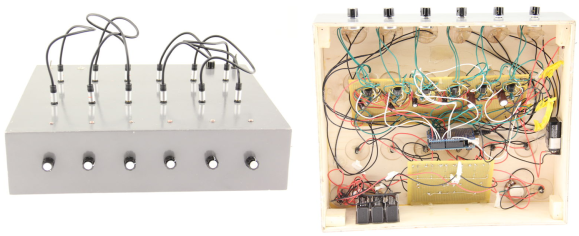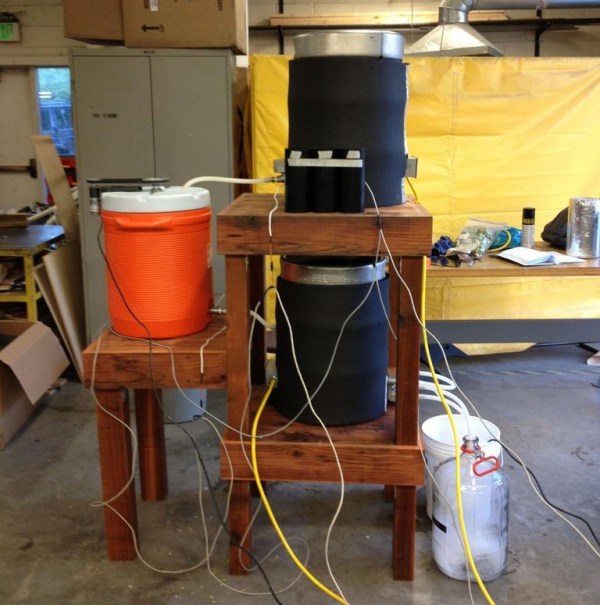
[Dmitry] is a bit of an industrial artist / hacker, and he’s recently finished this interesting and interactive audio exhibit called the Cryophone.
As you know, dry ice is terribly fun. When placed in water, it sublimates from its solid to gaseous phase rapidly, releasing carbon dioxide gas and causing a drastic (and sometimes violent) temperature change. [Dmitry’s] project attempts to amplify the sounds of these reactions and create music(?) using data from sensor inputs in the system. He uses piezo elements, temperature sensors, and an Arduino to generate an algorithmic composition from the various sensors, which a Mac Mini then synthesizes and outputs as audio in 6 channels.
The result is an eerie collection of noises that would do well in a haunted house or a horror movie. Take a listen for yourself after the break, and if you missed it, check out another unique, audio-based art installation: ‘conus.’
Continue reading “Cryophone: A Dry Ice-Powered Musical Installation”















